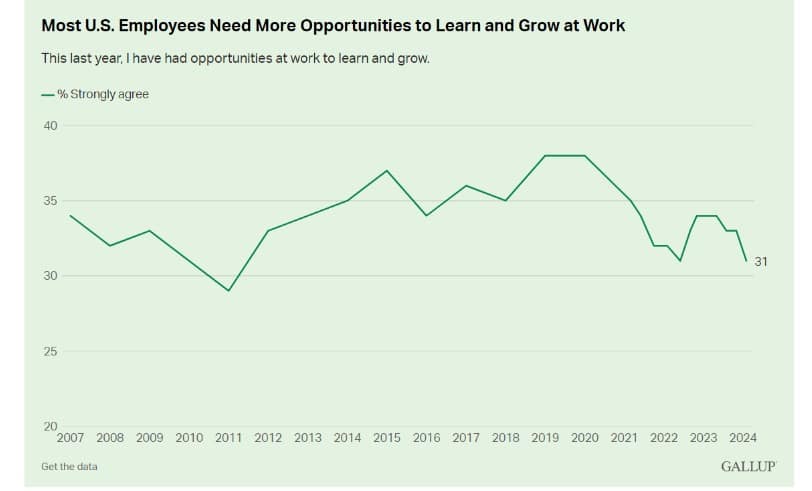Employee marketing has been around in some form or another for a while, but it’s taken a new and interesting turn with the advent of social media. Now, everyone can share company events and promotions easily with 300+ friends online, broadening the reach of the company organically.
In this article, we’ll cover what employee marketing is, offer some examples that you can apply to your company, and cover the core benefits and challenges associated with this marketing strategy.
Understanding employee marketing
Employee marketing is a type of company strategy where employees are asked to promote the brand’s products and services via their own personal social media accounts. They might also be asked to use their blogs and other platforms for this purpose.
Employees might be asked to share all kinds of company-related content within their own networks. Such content could include company and product updates, branding events, and even promotions. If you see your high school classmate hyping up the company they work for on LinkedIn, you’re witnessing employee marketing in action.
Companies benefit from this system with an increase in brand visibility, credibility and engagement, e.g. clicks and likes. Hey, if a friend is recommending your small business tools, that says a lot, no?

4 examples of employee marketing
There are a bunch of employee marketing examples out there, but some of the more common ones include:
- Employee social media advocacy: This is where employees are encouraged to share important company updates and achievements, as well as product promotions on their own personal social media accounts.
- Employee referral programs: This method has been around for a long time, and involves incentivizing employees to refer potential customers to the company. They might receive a bonus or extra holiday, for example. The company essentially makes use of their employees’ networks to aid business growth.
- Employee-generated content: If you’ve ever had your sister rollerskating up and down her street holding a hashtag banner while you try to hold a camera without shaking, you might be familiar with this one. Basically, employees are asked to create and share content for the company brand, such as videos about their PBX telephone systems, blog posts, or testimonials. Additionally, employees can contribute to or curate content for the company’s email newsletter, further extending the reach and impact of your marketing efforts. The idea is to showcase the company’s culture and values, as well as promote events and discounts.
- Employee ambassador programs: This is where you choose specific employees to act as brand ambassadors. They get to attend events and conferences and the like, while representing the company. Their job? To enhance brand visibility and credibility through their warmth and charisma!
Benefits of employee marketing
There are a lot of benefits to using the employee marketing technique, and we’ll cover the core ones you should know here!
1. Increased brand visibility
Employing various marketing strategies, including employee marketing, can significantly amplify your brand’s reach and influence. This approach not only extends brand visibility but also integrates seamlessly with broader marketing objectives to enhance overall campaign effectiveness.

If the average Facebook user has 340 friends, for example, that’s 340 potential new links with a wider audience. This also allows companies to tap into their employees’ more diverse networks, thereby accessing new demographics, regions, and communities that hopefully align with their target audience.
This inevitably creates potential new business opportunities. Plus, recommendations and content shared by employees are more likely to resonate with their network as they come from a trusted source. What’s more, if you’re a company that’s investing in diversity, equality, and inclusion (DE&I) initiatives, widening your demographic reach may even help boost your recruitment strategies. Here are a few blind recruitment examples if this is an area you want to develop.
This is a pretty powerful way for companies to expand their brand’s presence and connect with a wider audience in a way that’s a little more personal and authentic.
2. Enhanced credibility
Nothing will boost any brand’s reputation better than word-of-mouth, or friends telling other friends how great that brand is. We trust our friends’ opinions when it comes to selecting an ATS, for example! When your employees advocate for your brand, it can enhance your brand’s credibility, authenticity, and reputation.

And that can end up having a ripple effect! When employees share their own positive experiences, insights, and recommendations about the brand they work for with their own networks, it can make the company look even more credible to potential customers and partners.
Getting feedback from individuals you know or think of as genuine, such as employees, makes the information feel more credible. By having employees act as brand advocates, your company can establish a more authentic and relatable image. This usually resonates with target audiences on a deeper level.
Having your employees advocate for your brand can humanize your brand. It shows that real people are behind the products and services on offer, which can help build trust, and even loyalty, with customers.
3. Cost-effective marketing
You already pay your employees for their time, right? Asking them to fill the role of brand advocates can be a great, cost-effective way of getting your products out there, especially compared with more traditional advertising methods. What’s one little share that takes all of 10 seconds and can reach hundreds of new people in that instant?
Since your employees are voluntarily sharing company content, this has the potential to generate more organic reach and engagement without needing to pay for advertising. You can incentivize your employees to take part in content creation through various rewards, recognition, and gamification so your brand gets promoted at a relatively low cost.
Employee advocacy can also engender sustained marketing efforts over time, so you don’t need to continually invest in external marketing campaigns. By creating more authentic and trustworthy interactions with customers, you can also reduce the cost of acquiring new customers by keeping the ones you have.
4. Improved employee engagement
As well as benefits to your reputation, exposure, and cost-saving, employee marketing can also boost your employees’ engagement rates with the company. How? Well, by involving employees in your marketing activities, you can make them feel involved and invested in the outcome, and boost their morale and sense of pride in the company. It turns their work into part of a group effort.

Involving your employees in marketing initiatives can help give them a sense of ownership as they become more active in promoting the values and message of the company. Feeling included then usually boosts morale and job satisfaction, making them more engaged and productive.
Of course, taking part in marketing can also give your employees the chance to develop new skills, e.g. social media management and content creation, so it’s great for professional development. And, working as part of a marketing team to get the message out can foster deeper connections with coworkers.
5. Strengthened relationships
Employee marketing can also help build stronger relationships between your employees, customers, and the company. This occurs when you foster a sense of community and loyalty by getting everyone involved in rowing the ship (your company) in the right direction.
Challenges associated with employee marketing
If you’re considering using the employee marketing method to boost your brand reputation, you should take some things into account. The following challenges are ones that can be overcome with good planning, training, and communication, but we shall cover them all the same:
6. Consistency in messaging
Every one of your employees will have their own personal style when it comes to social media. They’ll use particular filters, share specific types of content, and have their own tone of voice, which doesn’t necessarily reflect your company’s!

This is fine, but when it comes to sharing your posts, you want to make sure that your employees are communicating your brand’s message accurately and consistently across the different platforms. This can be a challenge, and it requires that you give clear guidance ahead of time.
Using project management software can help maintain consistency across all employee-shared content by allowing for centralized communication and monitoring of marketing campaigns.
Don’t expect your employees to radically transform their own social media profiles – instead, embrace what makes them unique, and find ways to bring together the differences in a way that sounds good. You want the tone of your employees’ voices to be authentic, not contrived.
7. Employee participation
While this process might help improve employee engagement, getting people involved in the first place can be a challenge. Not everyone wants to blend their work life with their private social media profiles.
So, encouraging all employees to actively participate in marketing initiatives such as these, and share company content, can be a hard feat, especially if they are not feeling particularly engaged or motivated. You need to make sure to incentivize them to do this in some way, so that it’s worth the effort.
You could find ways to gamify the process and turn it into a competition to get people excited. You could offer some kind of reward. Making it fun rather than an arduous obligation is key.
8. Monitoring and compliance
Checking that your employees are actually sharing the content, and sharing it in the right way, is another challenge. You need to give time and resources towards monitoring your employees’ activities on social media and ensuring that they are complying with your brand’s guidelines and regulations.
If someone is sharing disinformation right after sharing your posts, it’s not a good look for your company. So think about providing social media training to ensure your message is shared in the best way possible.
9. Balancing personal and professional boundaries
A challenge we briefly touched upon earlier is the challenge of balancing employee personal and professional boundaries. It might be tricky for employees to strike the right balance between their personal and professional identities when taking part in employee marketing activities.

We are different people outside of work than we are in work, and that’s a healthy boundary to maintain. If people are sharing work-related posts to their personal blogs, how do they avoid interacting with reactions, comments, likes and messages about such content after work hours?
How do they separate their personal posts, photos of family, and personal political opinions, from the marketing project? This isn’t just important to the company. It’s also important from a mental health perspective for the employees, as well as a labor law consideration.
10. Managing feedback and responses
Finally, one last significant challenge to consider! You need to figure out how to handle feedback, comments, and inquiries from audiences generated via your employee marketing efforts. This requires timely responses, which is trickier when questions are directed to your employees, who may not have the answers, rather than to the social media officer.
While your employees can share a post easily enough or generate some content, they aren’t necessarily experts in your product. This is why devising a strategy for responding to comments and queries is a vital part of any employee marketing initiative.
Final words
Employee marketing can be a cost-effective way of driving engagement organically with a wider social demographic than your paid advertising campaign can offer. As well as this cost-efficiency, other benefits include increased employee engagement and enhanced teamwork, and even improved productivity, among others.
There are some challenges you should be aware of; key among them is that of consistent messaging. With the right guidelines in place and support for your employees, you can gamify your way to higher employee satisfaction and customer retention rates.

